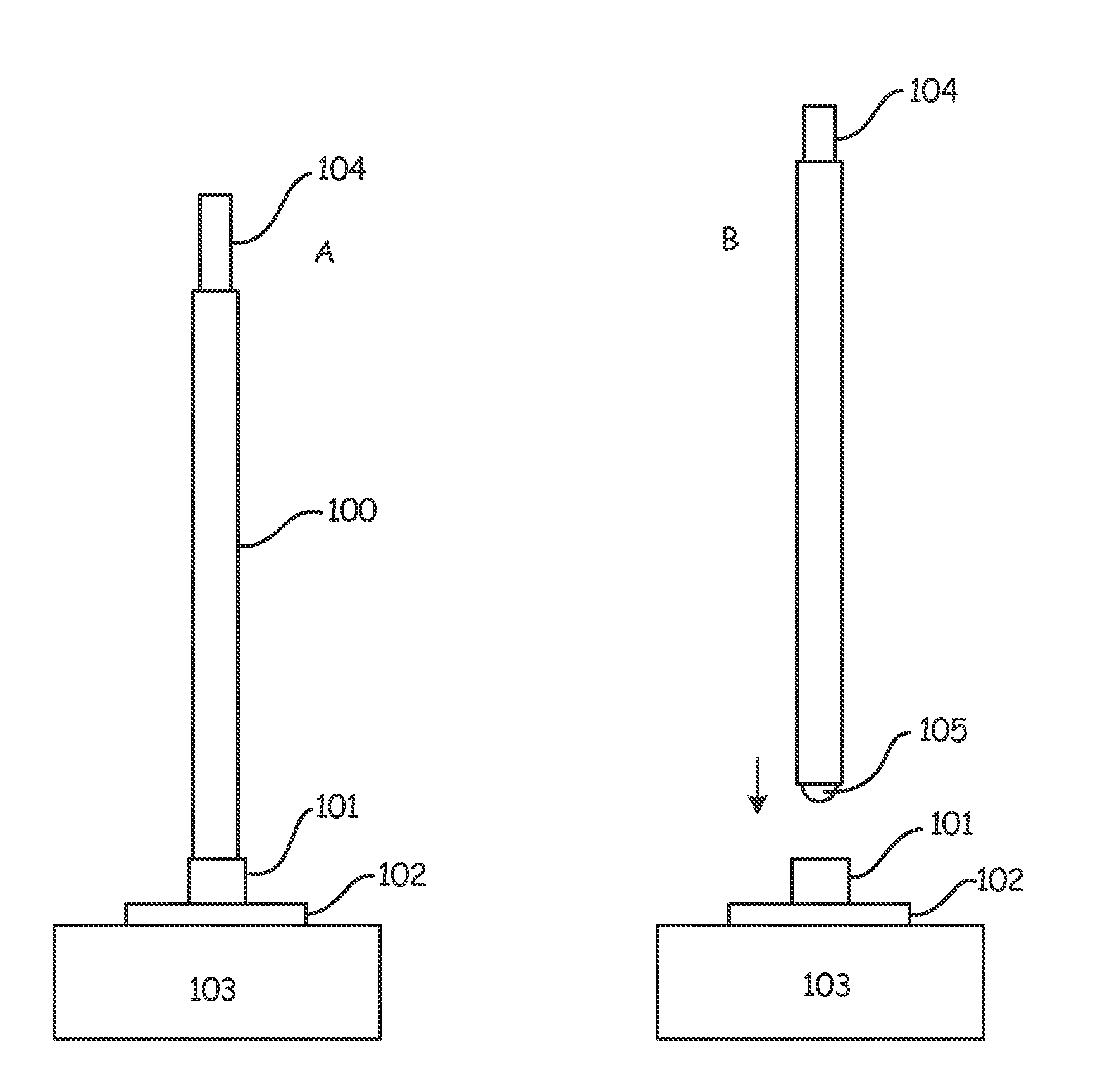Arterial cannula for cardiac surgery
- Summary
- Abstract
- Description
- Claims
- Application Information
AI Technical Summary
Benefits of technology
Problems solved by technology
Method used
Image
Examples
Embodiment Construction
[0018]The cannula according to the invention includes three separate components, the cannula body (100), the pledget and stopper assembly (101 / 102), and the introducer (104).
[0019]The cannula shape and its dimensions are preferably according to those already known in the art.
[0020]The introducer (104) is a semi rigid tube placed coaxially inside the cannula to facilitate cannula placement and can include a hole for wire introducer commonly used to guide the introducer and cannula assembly to the required location. The introducer can be made from a semi-rigid material such as a polyolephin or other plastic that will assist in guiding the cannula assembly to the designated cannulation site. Specific to this embodiment, the introducer includes a sharp end that protrudes past the cannula tip, either the material itself being sharp enough to piece the vessel at the cannulation site or a small blade 1 to 3 mm in depth could be included in the introducer tip to permit simple and easy vesse...
PUM
 Login to View More
Login to View More Abstract
Description
Claims
Application Information
 Login to View More
Login to View More - R&D
- Intellectual Property
- Life Sciences
- Materials
- Tech Scout
- Unparalleled Data Quality
- Higher Quality Content
- 60% Fewer Hallucinations
Browse by: Latest US Patents, China's latest patents, Technical Efficacy Thesaurus, Application Domain, Technology Topic, Popular Technical Reports.
© 2025 PatSnap. All rights reserved.Legal|Privacy policy|Modern Slavery Act Transparency Statement|Sitemap|About US| Contact US: help@patsnap.com



